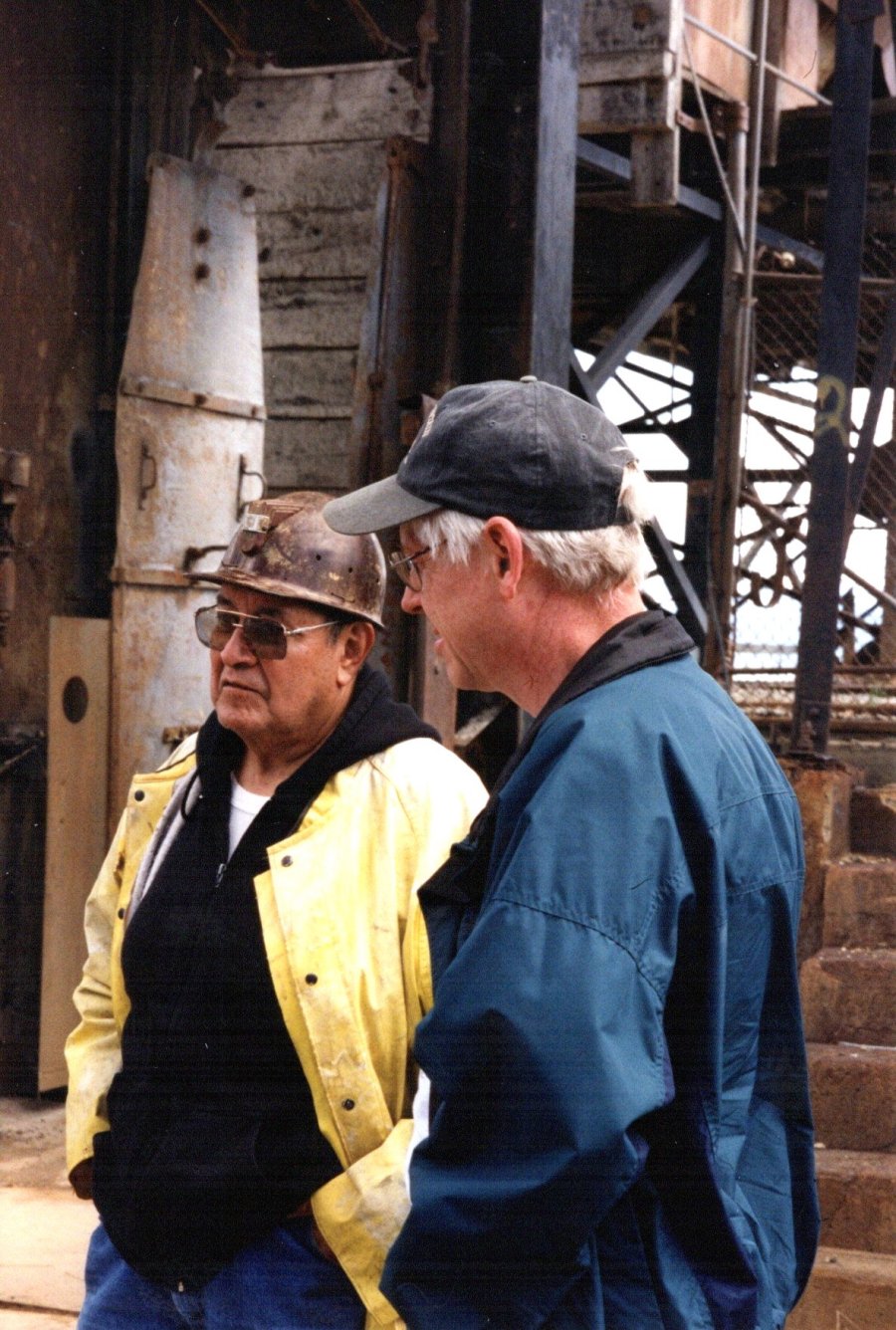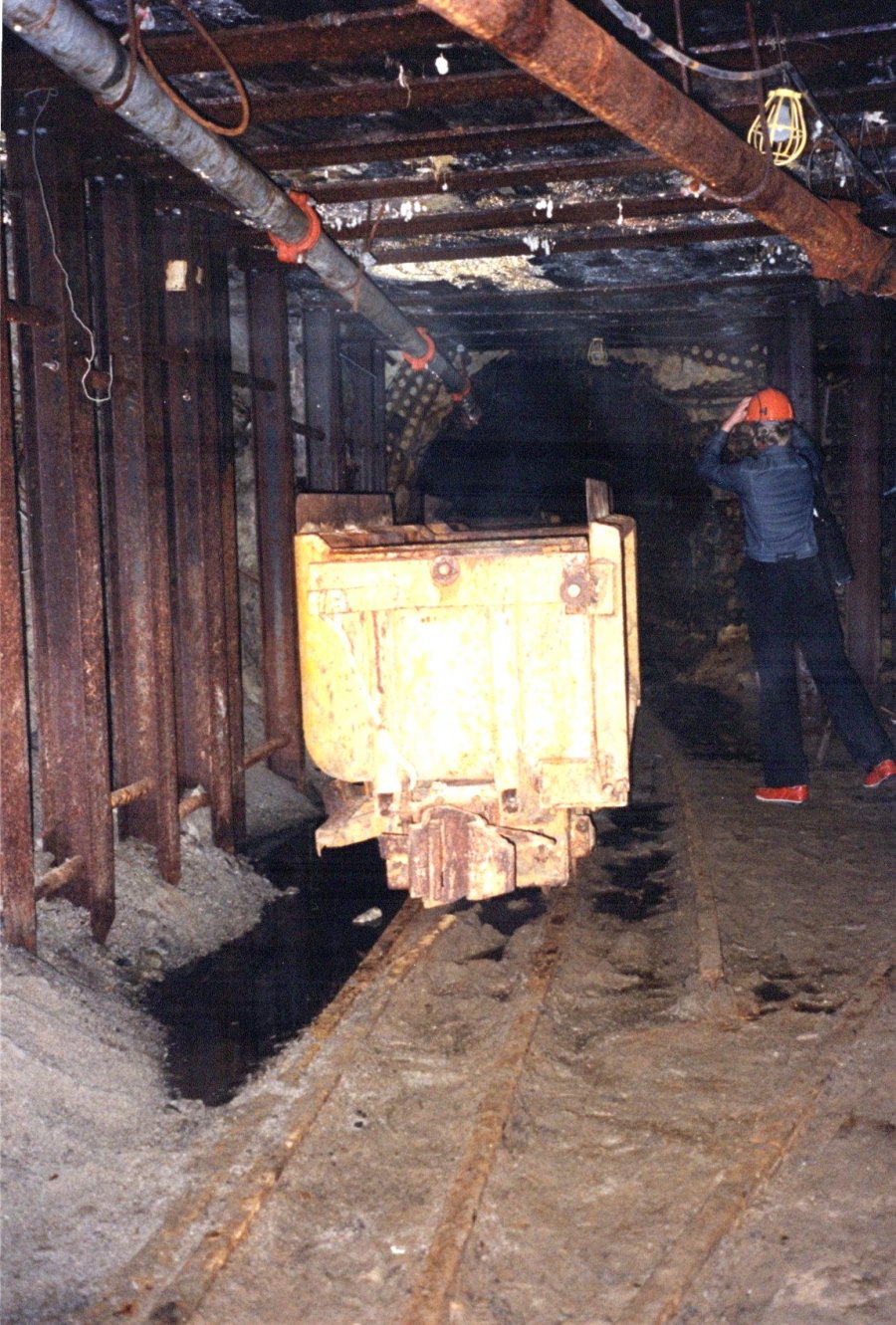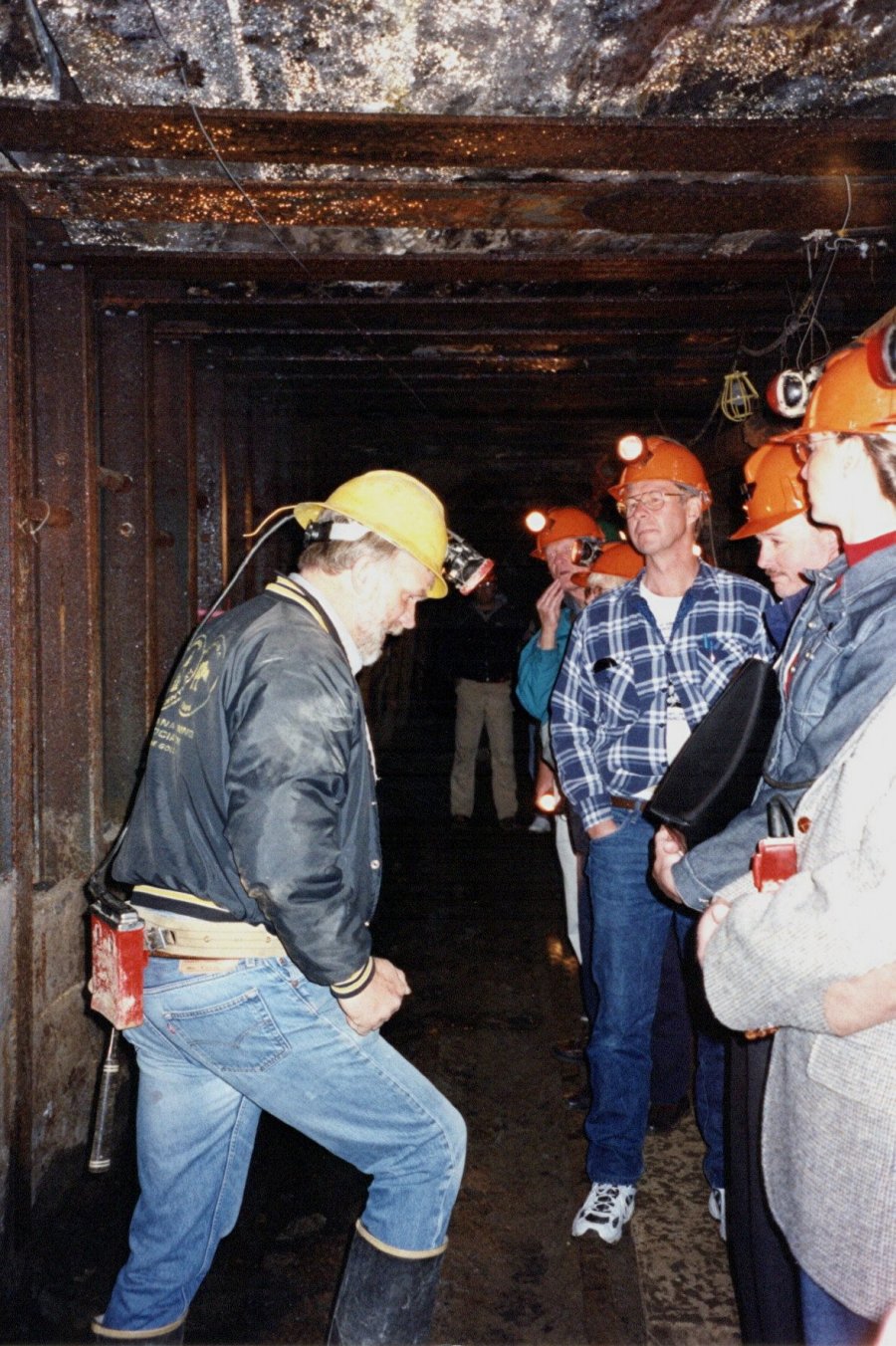2001 Mining History Association Field Trip 12th Annual Conference, June 14-17, 2001 Montana Tech Butte, Montana PHOTO GALLERY 3
CLICK ON A PHOTO TO DISPLAY A LARGER IMAGE
ANSELMO MINE, BUTTE, MONTANA
The Anselmo Mine, located to the west of downtown Butte, was an important copper, lead, silver, and zinc producer. The claim was patented in 1887 and sold to the Anselmo Mining Company in 1921. In 1929, it was acquired by the Anaconda Copper Mining Company which operated it until 1959. Its mine yard with the imposing headframe and idler towers is one of the most complete in Butte. Hoist Houses contain two hoists, the main electric hoist and a smaller auxiliary “chippy” hoist. Other buildings contain the Miners’ Dry, Timber Framing Shop, Engineering and Timekeeping Offices, Carpenter Shop, Plumbing and Machine Shop, Hose House for firefighting, and even the “Honey Car Dump” for dumping toilet cans from underground into the Butte sewer. Various types of railroad rolling stock are also on display in the yard near the Ore Bin. The Registration Form for the National Register of Historic places notes, “With buildings representing the full range of mine yard activities, the Anselmo is a monumental testament to Butte’s mining history and the daily experience of the thousands of mineworkers that powered the industry.” During the 2001 visit, the MHAers had an opportunity to meet several miners who had worked at the Anselmo and hear their stories first-hand. 
(Above) This winter scene of the Anselmo Mine Yard shows the array of supporting buildings clustered around the headframe and shaft. The mine yard at the Anselmo is one of the best preserved in Butte. (1968 NPS/HAER, Library of Congress) (Right and below) In these evocative photos, Mark Langenfeld (in blue at the right) talks with three of the “old timers,” about their experiences while working at the Anselmo. | 
| 
| 
| LEXINGTON MINE, BUTTE, MONTANA
The Lexington Mine and the nearby Alice Mine were discovered by prospectors who rushed to the Butte area after the 1864 placer gold discovery. Initially these and other mines in the area were operated for silver. The mining community would become the Butte neighborhood of Walkerville. Marcus Daley who would become one of he “Copper Kings,” owned the Alice Silver Mine from 1876 to 1890 when he sold it and switched to copper mining at the Anaconda Mine. The Lexington became one of the Anaconda Copper Mining Company’s important producers until it was closed in 1957. The Lexington Tunnel connected the Lexington to other underground mines in the northwestern part of the district. Its adit was in the Syndicate Pit near the Missoula Mine. When all mining stopped in 1982, Montana Resources bought the Anaconda assets. In 1987 an Australian investor purchased several of the old Butte underground mines from Montana Resources and formed the New Butte Mining Company. It reopened the Lexington Tunnel to explore for silver and lead. This program was unsuccessful and the company ended its underground operations in 1993. | | 
(Above) MHAers are entering an adit of the Lexington Tunnel which connected the Lexington Mine and others in the northern and western parts of the mining district. The tunnel was rehabilitated by the New Butte Mining Company in the late-1980s for underground exploration. (Right) Walking along a mine drift, the MHAers had an opportunity to see the original intricate, arched pattern of rugged mine timbering. The arched shape provided additional support needed in “soft (unstable) ground”. | 
| 
An ore car sits at a switching point along the track in the tunnel. The structural steel roof supports were required because of the wider mine openings at this junction. | 
Tour leader, Marcus Day, explains the operation of the historic Lexington Mine and the work done by the New Butte Mining Company in the 1980s and 1990s. |
|
|


